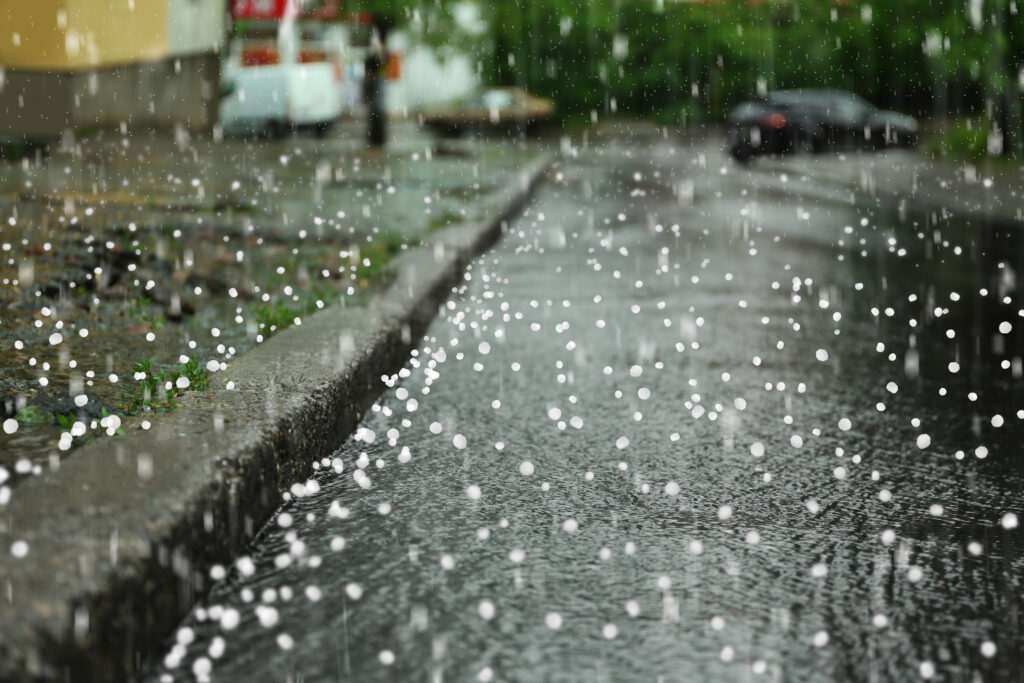
Hail Risk: The Growing Threat for Property Insurers
Hurricanes, tornados, wildfires, and other catastrophes may generate dramatic news coverage, but hail risk represents an increasingly common and costly threat to P&C insurers. Leveraging modern property intelligence to develop adaptive pricing models based on continuously evolving hail risk will prove crucial to insurers seeking to protect margins in regions that are especially vulnerable to this peril.
As it stands now, insurers in the United States receive more than 500,000 claims for hail-related property damage each year, mostly but no longer exclusively, between May and August. According to Experian, hail damage accounts for 45.5% of all homeowners claims nationwide, at an average cost of $11,695 per claim. It’s also the number one cause of roof damage claims. And it’s only getting worse.
In the 1990s, annual losses stemming from hailstorms averaged just over $1 billion. Today, they range between $8 and $15 billion per year. In 2021, a single hailstorm spanning Texas and Oklahoma inflicted more than $3.3 billion in damage. What’s more, rising global temperatures are causing hailstorms to grow more violent while hailstones grow ever larger. Communities in Texas, Colorado, and Alabama have set new records for the size of hailstones over just the past 48 months.
The impact is profound for insurers and insureds alike. States like Colorado, for instance, have seen average premiums surge nearly 52%. And more than 76% of carriers operating in the state have decreased the number of homeowners they’ll cover. But hiking up premiums or adding exclusions will only go so far in mitigating this risk. Exiting entire lines in regions or states prone to hail damage may not be an optimal strategy, either.
To understand and price hail risk accurately is to gain a competitive edge. With that in mind, insurers operating in so-called “Hail Alley” states should take the following considerations into account.
When Hail Freezes Over: How Warming Temps Boost Risk
Formed when supercooled water droplets adhere to each other in the upper atmosphere during thunderstorms, hailstones are jagged chunks of ice that range from the size of a pea (1/4 inch) to a grapefruit (4 1/2 inches—or even larger) and can fall at speeds exceeding 100 mph.
In 2022, the US was pelted by 4,436 hailstorms—a 17% increase over 2021, according to NOAA’s Severe Storms Database. During the first five months of 2023, there were nearly twice the number of hailstorms seen during the same period last year. In fact, hailstorms are more likely to form than tornados and can cause just as much damage.

Climate change is a significant driver in this. As global temperatures continue to climb, the planet’s cycle of precipitation and evaporation continues to accelerate—pumping more warm moisture into the air and fueling ever-more powerful thunderstorms.
Within the next five years, there’s a 50-50 chance average global temperatures will reach the point at which the frequency and severity of extreme hail storms and their attendant homeowners’ claims will see staggering growth. And the May through August window that makes up “hail season” will expand further across the calendar year.
More People, More Properties, More Peril…and More Opportunity
Climate change isn’t the only factor propelling the exponential growth in hailstorm claims, of course. Inflation’s impact on replacement costs is enormous. So is the seismic population shift to states like Colorado, Texas, and Florida in recent years. In the past, hailstorms striking sparsely populated areas had little to damage, let alone trigger a claim.
But over the last two decades, built areas and sprawl across the Midwest and Southeast have increased significantly. More people and properties spread across more at-risk areas means a continued increase in potential hail claims. But it will also expand opportunities for data-driven carriers.
Traditionally, underwriters have relied on a general understanding of zip codes likely to experience hail claims and broad-brush statistical analysis of entire regions. Unfortunately, these approaches lead to a misread on true exposure, as the likelihood of an event or a claim in the area fails to identify the drivers of claims and the expected costs.
At CAPE, we long-ago recognized that a lack of granular risk assessment solutions built specifically for hail has led many in the industry to mistake a massive opportunity for an intractable peril. Today, novel solutions like ours provide a new avenue for calculating hail underwriting risk and claim likelihood.
Addressing Address-level Hail Risk
Generally speaking, these solutions include AI-powered geospatial property intelligence drawn from aerial and satellite imagery and computer vision technology to help insurers understand up-to-date, address-level conditions that impact risk—including hail.
Our Hail Intelligence solution, powered by Canopy Weather, for instance, provides insurers with a property-specific hail vulnerability score drawn from more than 70 different risk factors measured against more than 20 million past insurance claims. Roof characteristics such as size and complexity are especially predictive of possible hail damage. So are adjacent property characteristics. For instance, our analysis has found that trees overhanging a dwelling’s roof can reduce hail damage by as much as 65%.
These technologies do more than just enable underwriters to accurately and competitively price risk where rivals may fear to tread. They also help them become trusted advisors to property owners by proactively discussing what things like roof repair can do to prevent costly damage from hail and other perils from happening in the first place.
The availability of this kind of insight arrives at a critical inflection point for property insurers. With population shifts colliding with climate change, hail poses an increasing risk to a growing number of properties. Data-driven insurers will have the advantage of leveraging operating models that simultaneously protect properties against risk from hail and other perils while defending their margins.
To learn more about how our Hail Intelligence solution can help property insurers have a holistic view property-specific hail risk, click here.
Aggregate Statistics Created Using Data Produced from Nearmap Imagery

